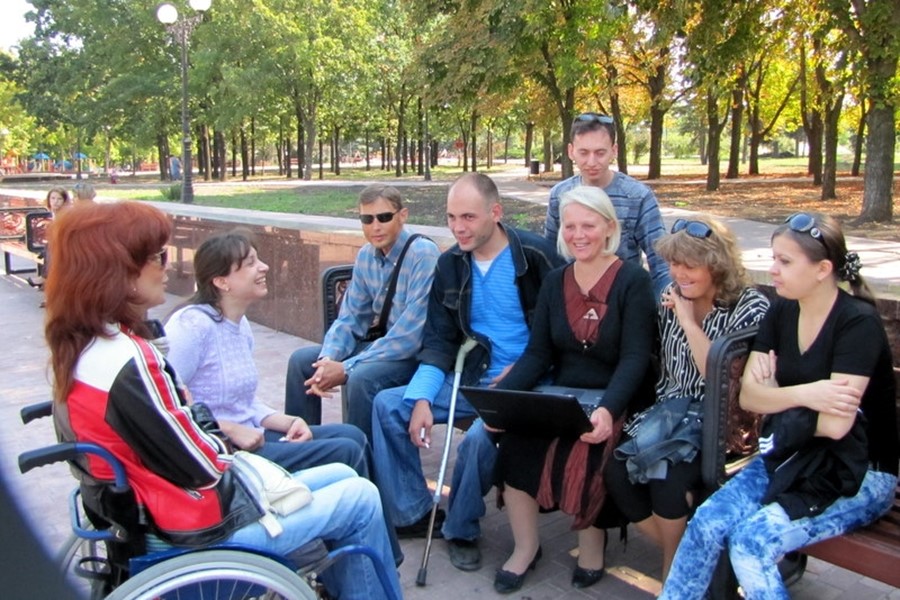IREX’s journey to a Do No (More) Harm approach

Like many global development and education organizations, IREX has been making a concerted effort to reflect on our role in the world, and to strengthen its diversity, equity, and inclusion (DEI) values and practices. A few years ago, I was challenged to change the way I think about mitigating harm in our programs by a DEI colleague. The conversation sparked a process of institution-wide reflection and learning that continues to improve IREX efforts to reduce harm in our work and in our workplace. This extensive process culminated in IREX’s Do No More Harm approach, which we employ today.
Power and resources are unevenly allocated among and within countries where we live and work. Evidence shows that inequality within countries is growing and freedom is on the decline. To bring about equitable and sustainable development outcomes, we as global citizens must take a clear-eyed view of the legacies of historic harm and contemporary forms of systemic harm. We as development professionals then need to take action to mitigate such harm – present as well as lingering effects from the past. This process of reckoning is underway. Reassessing the terms we use and thoughtfully choosing more transparent and inclusive language is part of that process.
Do No Harm (DNH)
The concept of Do No Harm is familiar to international development practitioners. Often associated with the Hippocratic Oath for medical professionals, in our sector the phrase is most used to reference the potential negative impact of development efforts on conflict dynamics, the environment, and/or research staff and participants. It is also one of the eight Minimum Standards for Gender Mainstreaming. The idea is simple: don’t inadvertently make things worse for the people and communities with whom we seek to build a better future.
It never occurred to me to deconstruct the ubiquitous term until a conversation with Sherelle Gordon of RootWorks, a colleague who focuses on diversity, equity, and inclusion within US-based organizations. “What about harm that has already occurred?” she asked.
It was a lightbulb moment. Words are powerful and can reinforce stereotypes or inspire whole new horizons of equity and opportunity. The phrase Do No Harm implies a clean slate. At best, it is an oversimplification; at worst, it may represent blinders related to colonialism, racism, misogyny, and other systems of oppression. Rendering such harm invisible is problematic, even if unintentional.
Do No More Harm (DNMH)
Ms. Gordon suggested that Do No More Harm is more accurate, and I agree. As a conceptual nudge, the addition of the word “more” triggers a conscious shift in how we consider the risks and benefits of development work. It forces an immediate pause to consider “more of what, exactly?” It centers the question of “who has been harmed and how?” Importantly, it also challenges us to ask, “and harmed by whom?” and grapple with accountability when the answer includes privileged social identity groups which we ourselves represent. Asking and answering these questions better positions international development practitioners to work in genuine partnership with local groups led by and for marginalized groups on ethical, effective, and safe harm reduction.
Applying a DNMH conceptual framework in practice
I would like to share a few insights from the past three years of building a critical mass within IREX to retire DNH and embrace DMNH. Top among them:
1) Adding a standardized footnote to documents and resources to clarify intent
As noted, adding the word “more” to such a familiar phrase can be jarring. At a practical level, it is often edited out of documents that include it. To address this, we now use the following standardized footnote to explain to readers unfamiliar with it. This supports the reflection and learning necessary for more inclusive development practice.
IREX’s Do No (More) Harm approach means we take proactive steps to mitigate negative unintended consequences to beneficiaries, partners, and staff as a result of harm caused by our activities and/or past and current harm related to existing identity-based disparities and structural forms of discrimination.
2) Using analytical tools to assess identity-based harm
How we are treated at a militia checkpoint or targeted by online misinformation and harassment is influenced by our gender, race, and ethnicity as well as where we live and work. We need more risk assessment and mitigation planning tools that support staff to weigh social identity alongside risk variables such as armed conflict, climate crises, and elections. To help staff safely gather relevant data and effectively gauge the likelihood of such harm, IREX teams have developed analytical tools such as the Intersectional Rapid Gender and Protection Analysis and the Identity-based Risk Matrix.
3) Providing concrete guidance to apply awareness and tools
To most effectively reduce harm, it is best to couple awareness of DNMH and analytical tools like those described above with concrete guidance for staff on taking evidence-based action. Common development activities like skills training lend themselves well to a DNMH approach. For example, IREX’s SAFE Basic Training Curriculum developed an Inclusion Annex with steps that training designers and workshop facilitators can take to avoid exacerbating the effects of past harm and reduce the chance of unintentionally causing additional harm during trainings.
Together with our partners around the world, we continue to learn and refine our awareness, analysis, and application of Do No (More) Harm tools and practices at IREX.